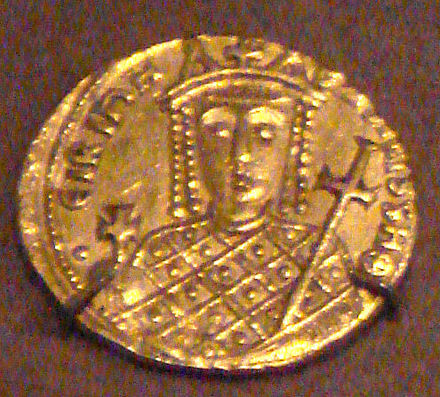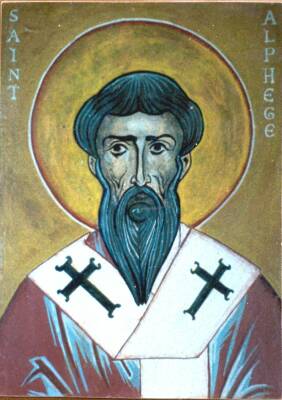797
The usurpation of the Empress Irene
Irene (752-803) was the wife of the Byzantine Emperor Leo IV and the mother of the Emperor Constantine V. Unlike her husband, Irene was a supporter of the veneration of icons at a time when the empire had adopted a strict and controversial policy of iconoclasm. After the death of Leo in 780 she ruled as regent for her son and relaxed the persecution of iconodules. She summoned the Second Council of Nicaea in 787 which once again permitted the reverence to icons and aligned the Eastern Church once more with Rome.
When her son came of age Irene was insistent on retaining real power and the two frequently clashed. Finally in 797 Irene had her son arrested and blinded (as a way of rendering him unfit to rule) in the same palace chamber in which she had given birth to him. Constantine V died shortly after from his wounds and Irene resumed sole rule of the Eastern Roman Empire. This usurpation was an excuse for the papacy to turn away from its obedience to the emperors in Constantinople and to look for new protectors among the Franks. Since Irene, as a woman and a murderer of her own son could not claim legitimacy, Pope Leo III crowned Charlemagne Emperor on Christmas Day 800.
In 802 Irene was deposed and sent into exile. Her icon-friendly reforms were undone.
1012
The Martyrdom of St Alphege
Alphege (or Ælfheah) (953-1012) was the Archbishop of Canterbury at a time when England was suffering from renewed Scandinavian attacks. In 1011 Vikings attacked the city and took Alphege hostage. He refused to be be ransomed and the pagans killed him, legendarily subjecting him to the “blood eagle” torture. He was the first Archbishop of Canterbury to be murdered; the next to be assassinated, Thomas Becket, prayed to St Alphege just before his own death.

